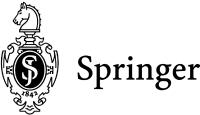Part II: Mass Customization and Personalization
Key Strategies for Customer Centric Enterprises
Being customer
centric includes a wide range of strategies, approaches and ideas. Agile
manufacturing, focused factories, flexible specialization, lean manufacturing,
customer relationship management, and mass customization are strategies
that emerged from the literature in the last decades. Despite different
backgrounds and focus, the major objective of these new concepts is to improve
the ability of enterprises to react faster to changing customers' needs
and to address the heterogeneity of demand more efficiently. This book's
emphasis is placed on mass customization and personalization which can be
seen as key strategies for making firms more customer centric. Thus, Part
II provides an introduction into principles, concepts, demarcations, and
business models for mass customization and personalization. The scope of
the contributions in this part is relatively broad. The intention is to
sharpen the reader's view on customization and personalization and to give
an overview into the reach and scale of these concepts.
Part II starts with an introduction into the extent of mass customization
principles in industry. In Chapter 2 MacCarthy, Brabazon and Branham contribute
to our understanding of both the potential of mass customization and the
constraints under which real mass customizers may operate. The authors show
that there is not one mass customization strategy. They present five case
studies from a range of sectors - bicycles, computer assembly, communications
components, mobile phones and commercial vehicles - and analyze their approaches
to customization as well as their modes of operations. The scope of being
customer centric is also the topic of Chapter 3 by Riemer and Totz on the
many faces of personalization and mass customization. Their focus in on
the emergence of internet technology enabling cost-effective one-to-one
relationships with customers and, thus, new ways of doing business. Personalization
(individual (one-to-one) communication) and mass customization (efficient
product individualization) are discussed and set in relation to each other.
The authors conclude that customization has to be accompanied by personalization
of communication and customer interaction. They integrate customization
and personalization into the online marketing mix. By doing so, the chapter
provides a thoughtful discussion of the economic motivation of personalization
and mass customization based on the capability of individualization to increase
switching costs for the customers - resulting in deeper and more profitable
customer relationships.
Does mass customization and personalization pay? Reichwald, Piller, Jäger
and Zanner (Chapter 4) evaluate this question from an economic perspective.
They apply a general framework for the economic evaluation of mass customization
on a special setting of decentralized, customer centric production units
(so-called mini-plants) located in close proximity to a particular local
market. The chapter examines whether such a decentralized scenario of value
creation could provide a suitable framework for the efficient production
of individualized goods. The authors discuss whether the additional costs
and hurdles of mass customization in mini-plants could be counterbalanced
by the advantages of such a decentralized setting (compared to both mass
production and centralized mass customization). Advantages could arise from
new cost saving potentials and a higher consumers' willingness to pay for
a customized solution. However, at the bottom line there is no generic rule
as to when mass customization does pay. Only by evaluating the influencing
factors of a particular situation can an answer be provided. With this in
mind, Thoben contributes in Chapter 5 to the understanding of the nature
of mass customization by comparing its system design principles with (traditional)
customer driven manufacturing. Especially in Europe there is a long tradition
of designing and manufacturing customer specific products such as machinery,
ships and cars. The author evaluates synergies, similarities as well as
limitations and potentials of both mass customization and (traditional)
customer driven manufacturing. Bringing the discussion back to life experiences
and case studies, Franke and Mertens discuss in Chapter 6 the use of personalization
approaches in industry and public administration. While the theoretical
foundations of user modeling and personalization techniques have been discussed
in literature for several years, their practical implementation has been
neglected for a long time. The authors share their experiences from a couple
of cases of computer-assisted information, consulting, decision support
and offering systems. These systems use personalization technologies to
individualize the dialogue between man and machine pragmatically by user
modeling based on content based filtering as well as social filtering.
Part II concludes with a new perspective: individualization and personalization
are characteristics of art, as Gros discusses in Chapter 7. As Chapter 1
of this book has already shown, using the creativity of consumers may lead
not only to better fitting products but also demands a new way of performing
- and evaluating - value creation in industry. Gros sharpens our view of
being customer centric by approaching customization as art. Applied art
was once an important field of industry. However, as a result of industrialization
and mass production, the link between art and consumer goods has been broken
for almost a century. Now it could be assumed that new mass customization
technologies may favor a rebirth of the association between art and consumer
goods, a relationship coined 'art customization' by the author. |


